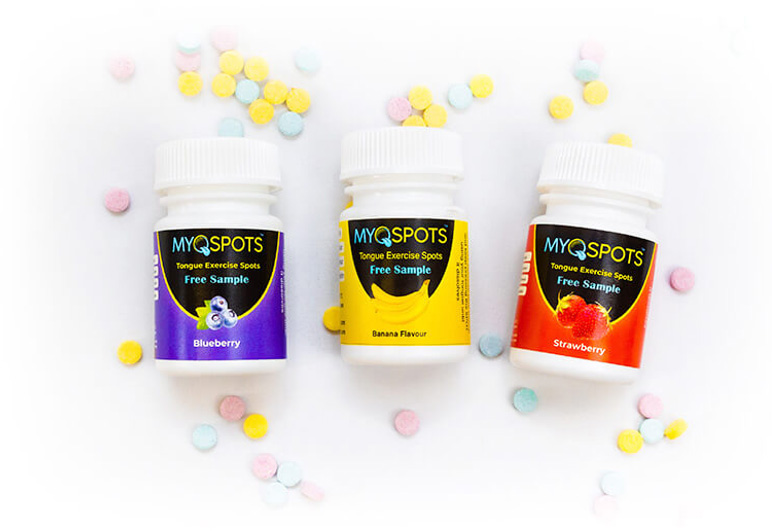If you’re keen to use content marketing to generate patient enquiries, then, eventually, you have to sit down and start writing your blog. The same is true of your website and social media posts. So, let’s take a look at the art of healthcare copywriting.
Conversational copywriting
Writing for a general audience is quite different to other forms of professional writing. When you’re referring a patient to a colleague, you’ll use medical terms that you both understand. When you’re submitting a thesis or journal article, you’ll use a formal, highly technical academic style. When you’re managing your practice, you’ll use business language about cash flow and overheads.
But when you’re writing for the public, you need to write in a friendly, conversational style as if you’re talking to a patient. As the name implies, conversational copywriting feels like a good conversation – friendly, accessible and interesting – and it helps to form or deepen a relationship. It’s a writing style that works well for healthcare marketing.
Conversational copywriting comes naturally for some healthcare professionals. For others, though, writing in a conversational style is hard. It takes deliberate effort to break the habits created by years of academic training.
Remember our low levels of literacy
Your goal is not to sound as clever as possible – it is to reach as many patients as possible. Even if you’re primarily marketing to other healthcare professionals (e.g. a surgeon marketing to GPs to generate referrals), your audience still benefits from seeing that you’d relate well to their patient.
This means writing for a reading age of about 12 (year 7). Only 15% of Australian adults can read beyond a Year 11 or 12 level. The Australian Government’s Style Manual and the W3C Web Accessibility Initiative recommend pitching content to suit lower high school readers. Tabloid newspapers generally pitch to this readership.
If you’re thinking, “My twins are in year 8 and they’re reading Dickens and Chaucer,” then remember that your own children are probably near the top of their cohort. Your patients won’t all come from this group. Generally speaking, you’re better to aim for Harry Potter than Herodotus.
Befriend Google
Your readers are not your only audience. In the digital world, you’re also writing for Google. Google seeks to help readers find the best and most reliable answer to their search query. So, when you’re writing for Google, you need to demonstrate your expertise, authority and trustworthiness and pay attention to keywords and other search engine optimisation techniques.
11 healthcare copywriting tips
Here are our top 11 copywriting tips to help you get started.
Plan & structure
A waffly blog about nothing in particular won’t educate your patients and won’t position your practice well.
So, before you write, plan. What’s the purpose of the article? What do you want your readers to learn? What action do you want them to take after reading?
Then create a structure. If you’re writing about a particular condition, you might have sections on causes, symptoms, prevention and treatment. Subheadings help guide your reader through the article – especially important when reading online.
Research your keywords
Keywords are the search terms that your audience might type into Google. If you’re writing a blog on migraines, you want people to find it when they search for information on migraine causes, triggers, treatments etc.
Many people now search by asking Siri or Alexa a question like ‘does chocolate cause migraines?’ You could use that exact term as a subheading in your article.
Keywords help Google deliver your blog as the answer to someone’s search query. Before you start writing, identify a list of keywords then pepper them through your blog naturally. Do not stuff your keywords into every line – Google does not like this!
Write for your audience
This goes back to your practice’s typical patients and your blog’s purpose.
If you’re a physio who treats athletes with sports injuries then your audience clearly cares about fitness and has some background knowledge of how the body works.
If you’re a GP, you’ll have a more varied audience but could think about a typical patient’s age range, education level and cultural background.
If you’re a medical specialist, you may have two audiences in mind – patients and referrers. You might write educational material for GPs about your field of expertise, such as a review of recent research or advice on when to refer. Or you might write directly to patients (many do choose their own specialist and simply ask their GP to complete the paperwork).
Try to imagine your reader before you write. It may seem silly but it does help!
Connect with your readers
Your readers are your potential patients. You’re trying to form a relationship with them, a connection that ultimately makes them more likely to book an appointment.
How do you do that? By talking directly to them.
Choose a friendly, conversational tone of voice, using the second person point of view, addressing your reader as ‘you’.
You can be serious and informative or lighthearted and fun but always be professional. Don’t swear in your blogs.
Use storytelling techniques to engage your reader
Storytelling techniques help you create a connection and tap into your reader’s emotions. Imagine your reader again and then tell a story.
For an athlete, you might paint a picture of being on the footy field, feeling invincible, about to score the winning goal but then being injured in a devastating tackle that ruins the whole season.
Storytelling is particularly useful when describing your own practice. What’s your story? Why did you go into this field of healthcare? How did it feel to open your doors? What’s been challenging or rewarding about your journey? What are your ambitions now?
Follow plain English principles
Plain English is a writing style that prioritises clear communication that meets the reader’s needs. It’s a refreshing improvement on the officialese, legalese and other -eses that went before!
Plain English does not mean ‘dumbing down’. As the Plain English Campaign explains, “It’s not ‘cat sat on the mat’ or ‘Janet and John’ writing. Almost anything – from leaflets and letters to legal documents – can be written in plain English without being patronising or oversimplified.” (See their guidance on plain English for medical writing, including plain English explanations of medical terminology, here).
Many journals now require a plain English summary of each published article. Some judges are also expressing their judgements in plain English, like this one who wrote a simple letter to the children involved in a custody case.
When writing in plain English, remember to:
- Aim for a reading age of about 12 (about the pitch of a tabloid newspaper)
- Keep most sentences short (about 25-30 words max)
- Avoid slang and idioms, those colourful phrases like ‘a dog’s breakfast’ or ‘Buckley’s chance’ that cannot be translated literally and so may confuse people from culturally and linguistically diverse communities
- Use inclusive language (the Oxford English Dictionary traces singular ‘they’ back to 1375 so, yes, it’s OK to use it!)
- Prefer active to passive verbs
- Replace medical terms with everyday ones, ‘painkillers’ is more easily understandable than ‘analgesics’
- Use bullet points and lists to break up text.
Turn features into benefits
If you’re advertising your clinic (and everything you do online is doing that), then you must translate features into benefits.
That toaster you bought recently features 4 slots. But you bought it for the benefit of stress-free breakfasts when both kids can make their toast without arguing over who got there first.
Whenever you describe something, ask yourself ‘So what?’ That will help you get from a feature like being open on Saturdays to a benefit like no need to take time off work. Don’t make your readers do this translation work themselves.
Similarly, if you’re promoting a new medical device, don’t get hung up on the amazing technology – the ‘So what?’ question makes you highlight the benefits for patient care.
For a compelling lesson in turning features into benefits, watch this 3-minute clip where the 1960s advertising experts of Mad Men turn the technical wizardry of Kodak’s latest device into something that everyone longs for.
Don’t oversell
It’s easy to get carried away when you’re writing. Your website and blog posts count as advertising though and are subject to AHPRA’s marketing rules. You need to be careful not to mislead your readers or create an unreasonable expectation of a positive outcome from treatment.
You also need to substantiate your advice with links to reputable websites or sources. If you’re using ChatGPT to write material, be aware that it can generate fake references.
Call to action
Your writing should prompt your reader to do something. Ultimately, you’re writing to help build your practice and you want to turn your readers into patients. Maybe you want your readers to make an appointment, register for a workshop, download something (giving you their email address first) or get vaccinated.
Whatever it is, make the action clear and easy to do. Provide a link to your online booking portal or your practice phone number right there at the end of your blog. Don’t make the audience go hunting for it.
Add a title and your bio
Your title should match your blog’s content but be enticing enough that readers click on it. Your most important keyword should be in your title and in your title tag.
SEMRush recently looked at titles such as questions, guides and ‘how to’ headings and found that titles with lists (like 5 top tips) got twice the traffic and shares of other headlines.
As for your bio, this is your chance to prove your expertise to Google. End each blog with your name, photo and credentials. That shows Google that medical advice is coming from a medical professional and so boosts your EAT score (expertise, authority, trustworthiness).
Review and edit
Always review your work before you publish, checking for typos, grammar mistakes and readability. Tools such as Grammarly and the Hemingway App are helpful here.
For consistency, it’s helpful to choose a dictionary that you’ll defer to for spelling decisions (download the Macquarie Dictionary app) and to use a style guide for other editorial choices like date formats, capitalisation and punctuation (check out the Australian government’s new digital Style Manual).
What about ChatGPT?
ChatGPT is an AI writing tool launched in December 2022. You give it a prompt and it generates text.
Our advice? Use it – but use it cautiously.
Use it to:
- Edit existing articles – e.g. to shorten something for a social post, improve its readability or polish your grammar
- Get yourself started – staring at a blank page is hard. Get ChatGPT to write something then improve it for your audience.
Be aware that it:
- May struggle to write high-quality articles unless you invest the time to give it a detailed brief
- Can be tone deaf at times and may lack the sensitivity needed for your audience
- Has no clue about AHPRA’s advertising regulations, which can make you vulnerable
- Has major content limitations. As the tool itself admits, ChatGPT may generate incorrect information and could produce harmful instructions and/or biased content. That’s a big risk to take in healthcare copywriting – human expertise is vital here.
- Generates fake references – again, breaching AHPRA.
How can Splice Marketing help?
Hopefully, you now feel more confident writing your blog posts.
But healthcare is a busy, demanding job that leaves little time and energy for other things. If you’d like to outsource your content marketing, then Splice Marketing is happy to help. Please contact us today.







